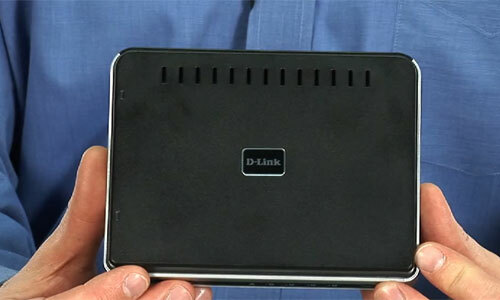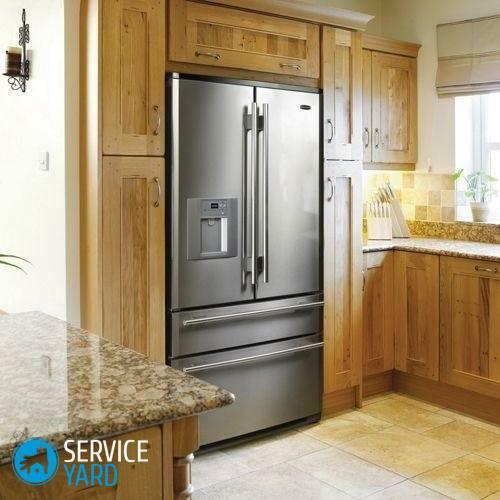It would seem that nothing is easier than buying a Wi-Fi-router, it can not be. However, in reality this device is not as primitive as many people think. Even meticulously careful examination of the router's passport may not be enough, because many of the nuances on which the device depends, in the passport or on the label are not indicated. Before choosing a wifi router, we suggest you read the material in this article, it will help you avoid mistakes and unnecessary costs.

Step 1: choose a Wi-Fi router by the speed of
The data transfer rate is usually prescribed in the technical characteristics of the Wi-Fi router. True, most often the manufacturer indicates a theoretical speed, which can vary quite a bit from the practical value. For example, if it is written in the home router's passport that it can broadcast data at a speed of 150 Mbps, then most likely, in fact you will receive about 100 Mbps.
It is clear that the device from which you plan to access the Internet via a router must support the same data rate over Wi-Fi. If it is less - it makes sense to look for a cheaper version of the router with a lower data rate.
In addition to the wireless signal speed, the router documentation specifies the speed of the LAN connection. This term refers to the conventional network connection of electronic devices through a twisted-pair cable. There is no special variety: there are models with a data transfer rate of 100 Mbit / s, there is - with 1000 Mbit / s. The latter are considered professional, are more expensive and are not used at home.
There is one nuance about the speed of data transfer, which is not written either in the passport or on the label. The fact is that any router in one way or another reduces the speed of the Internet, which provides the provider. So, for example, if you buy unlimited Internet with a speed of 100 Mb / s, then through the router you will receive only 95 or even less.
This loss of speed is caused by the router's scheme and is considered normal. Determine how much the speed of the Internet connection when working with a particular model, can only be experienced. We recommend that you carefully study the user feedback on the web. Of course, it is not necessary to make unambiguous conclusions on one or two messages, because often problems with routers appear due to errors in the settings. But the opinion of 15-20 owners will help you get a more or less objective idea about the work of the model under study.
Step 2: stability of the
The stability of the Wi-Fi router also applies to "hidden" characteristics, which are not written in the passports. It's no secret that routers have a property with a certain periodicity "hang".At the same time, uptime can be up to several weeks. Then the connection to the network abruptly terminates, although there are no apparent problems: the cable has not moved away, all indicators are glowing green, and the receiver( laptop, tablet or smartphone) is within the range of the router.

In such cases, you have to turn off the power of the router for a few seconds to restart it. Until you encounter this "glitch", it seems that there is nothing terrible in it. In fact, this problem can make the work on the Web very uncomfortable, especially since it happens in accordance with the law of meanness at the most inopportune moment.
The cause of "hangs" most often become errors in the firmware or overheating of chips. Therefore, very important is how often the manufacturer updates the firmware of its models. Obviously, the more well-known is the brand, the better it copes with the solution of this problem. And vice versa: if you buy an inexpensive model from some Nouneim from a remote Chinese province, you risk doing a regular reset of the router during the whole period of its service( fortunately, it will most likely not be so long).
Users who actively support file sharing on torrents suffer most from "hangs".If you are one of them, choose a router from at least the middle price segment.
Step 3: choose the range of the
The "reach" of a Wi-Fi router depends highly on the layout of your house or apartment, the material and construction of the walls, and other factors that it is almost impossible to anticipate and estimate in advance. Therefore, to establish the real radius of the router can only be practical.

If this characteristic is of particular importance, experts advise buying routers with three antennas. The presence of two antennas is not indicative of a large coverage area, since one of them can only work on signal reception.
Step 4: advanced features of
Many manufacturers equip their Wi-Fi-routers with USB connectors. These ports can be connected to flash drives, external hard drives, as well as printers that will be used as network devices. If you expect to use a 3G modem - look for a wifi 3g router. This router is also equipped with a USB port, but it is designed specifically for working with 3G-modems.

Speaking of non-standard features, we can not fail to mention IPTV-TV.If such a service is provided by your ISP, you need to find a Wi-Fi router model with the ability to support it. Note: far from all models this function is specified exactly as "IPTV".Often the passport says about the support of the "IGMP" standard. It is the same.
Step 5: it's time to ask the price for
Another important, though not technical, characteristic is the amount you will have to pay for the model you like. Let's see what manufacturers offer depending on the cost of the product.
Up to 500 rubles
The products of well-known brands that belong to this price category have minimal functionality and a complete set. Beginners, just beginning to conquer a place under the sun, equip their models a little more generously. The router for such a price is quite suitable for a user with a home Internet of 30-50 Mbit / s, one or two receivers, which does not need any special functions.
The D-Link DAP-1155 / A and Tenda W316R models can serve as an example of budget Wi-Fi routers.
From 500 to 1000 rubles
This is the most popular price range among domestic users. A typical representative of this segment is D-LINK DIR-300.The popularity of this model is due not only to a decent bundle, but also a large number of quality firmware.
Quite a lot you can find positive feedback about the products of TP-Link. Users note that the routers of this manufacturer very little cut the speed of the Internet connection.
For connoisseurs of Wi-routers with original design, you can advise the model asus rt-n16.
Among the models costing more than 1000 rubles there are many devices with two antennas, which are characterized by a clearer signal within the range. Many people like models with detachable antennas, which make it possible to amplify the signal as needed.
1000 to 3000 rubles
This category includes full-featured devices that provide their owners with a maximum of features:
- TP-Link TL-WR2543ND
- Zyxel Keenetic Giga II
- Asus RT-N56U.
In the same price niche, professional devices with directional specialization( interference protection, particularly high data transfer rate or the ability to support simultaneous communication with a large number of devices) are realized. For example, the
- RouterBOARD 951G-2HnD
- models of the Cisco SB RV110W-E-G5-K9.
Last advice: do not underestimate the help of your provider( current or future).Surely the company has a technical support service, whose experts will be able to correctly and reasonably advise you this or that model of Wi-Fi router. This advice in any case makes sense, because the quality work of a home router depends largely on the parameters of the equipment used by the provider company. So, do not hesitate and boldly dial the number indicated on the website or in the ad.
We wish you success!



